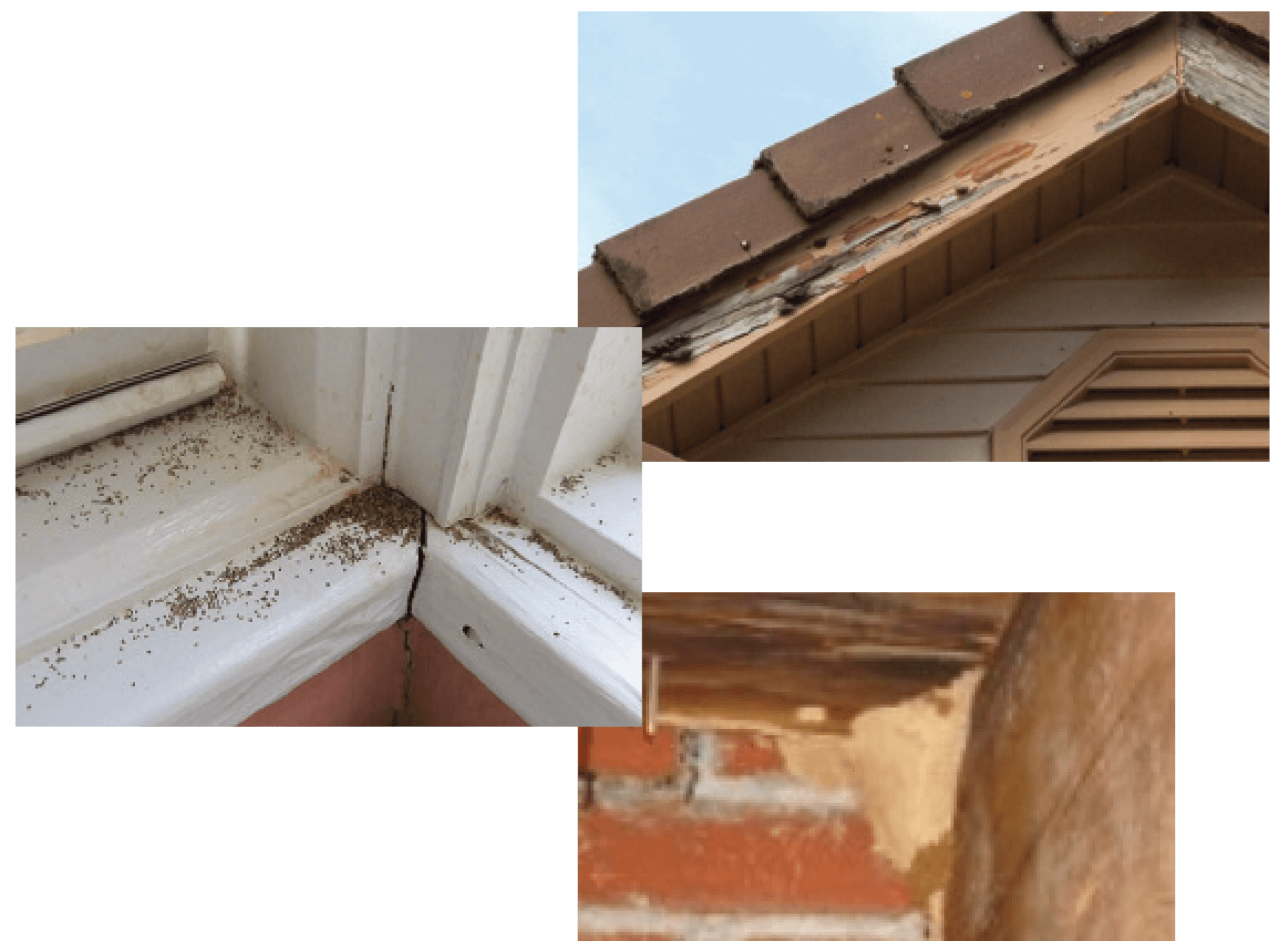
GET A FREE ESTIMATE FOR:
EVERY HOME CAN BE A FEAST FOR TERMITES
No matter how well your home is constructed, where it is located, or how old your house is, subterranean termites could invade it. They are in every state in the United States except Alaska. Termites are a significant threat to us in the Southeast, and the devastating damage they cause is rarely covered by insurance.
In their search for food and moisture, termites can gain access to your home through the narrowest of cracks, often as small as the thickness of a credit card. Termites can travel through expansion joints, foundation cracks, and tiny gaps at entry points around plumbing and electrical lines. They will build mud or shelter tubes, use them as freeways to travel through loose mortar joints, over and under brick, block, stone, pressure-treated wood, and metal termite shields, and will go over many feet of concrete to gain access into your home. Termites are even capable of building free-standing tubes, and at certain times of the year they can fly into your home.
At Tabor we feel that each home or building is unique. We will perform an inspection inside and out to determine the appropriate service for your home or business.

LIQUID SERVICE
When we do a liquid treatment, we use the latest technology and equipment to treat your home or buildings. No need to dig a trench and disrupt your grass or plantings around your home and have inconsistent results. Tabor uses a precision injection system to provide a more uniform treatment zone. Tabor precisely applies the product where it is needed, and we use 75% less water for your home protection. We will also carefully drill holes when necessary through slabs around the perimeter of your home for added protection. So, for a protective barrier around your home, and immediate protection from today’s as well as future infestation, call for a free inspection.
BAITING SERVICE
At Tabor we use from day one the Trelona ATBS Direct Baiting, which means we will install the bait on the first day we install the station; we do not insert a wood stick and then bait later. Tabor installs the station about every 10 to 20 feet around your home or building in areas where we think termites might be foraging. They will feed on the bait and travel back to share with the rest of the colony. As feeding on the bait continues and more termites are affected, the colony starts to die and thus is eventually eliminated. This service can be used as a stand-alone service or can be used in conjunction with a liquid service.
MIGHT THOSE “ANTS” REALLY BE TERMITES?
It’s easy to mistake a swarming ant for a swarming termite, so call the professional at Tabor to eliminate the guesswork. It takes a professional to tell the difference between a swarming termite and swarming ant.

WARNING SIGNS OF TERMITES
Scan the area for termite swarms during the day or early evening, often after a rainfall.
Look around windows and doorframes for tiny pinholes or exit holes.
Hunt for shelter tubes appearing around the foundation.
Check for dead termites or wings on window sills or along walls.
Look for blistering paint on walls or flooring.
Don’t extend an invitation to termites.
Have an annual inspection performed by a professional.
Repair leaking water pipes or down spouts as soon as possible.
Repair leaking roof, soffit, fascia board and siding.
Keep gutters cleaned.
Keep windows and door frames caulked.
Keep moisture out of the crawl space.
Turn sprinklers on to be sure they are watering the yard or plantings and not the house.
Keep mulch 4 to 6 inches away from home.
Place all forms of siding--including wood, drivit, and stucco—the recommended 4 to 6 inches above the ground.
Have no direct wood-to-earth contact with wood decks, columns, firewood, or the crawl-hole door.
Keep fire wood on a storage rack.
Remove tree stumps and roots next to your home.






